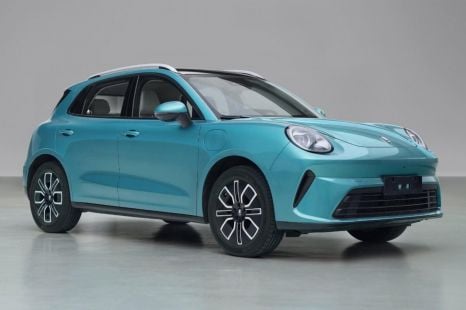

William Stopford
GWM is finally launching an electric SUV as Ora Cat breaks cover
4 Hours Ago
Skoda's largest car may be a low-seller, but its few fans can now enjoy more stylish looks and more tech including advanced suspension.
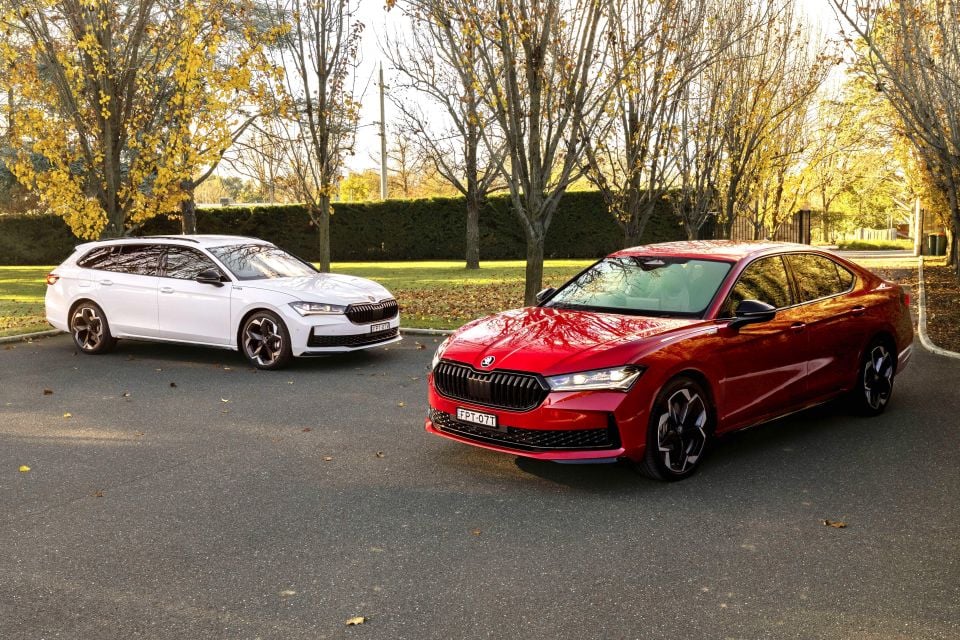


Quickly see how this car stacks up against its competition. Select any benchmark to see more details.
Where expert car reviews meet expert car buying – CarExpert gives you trusted advice, personalised service and real savings on your next new car.
The final large passenger car flying the Volkswagen Group flag in Australia has just entered a new generation, but it doesn’t wear a Volkswagen badge – enter the new Skoda Superb.
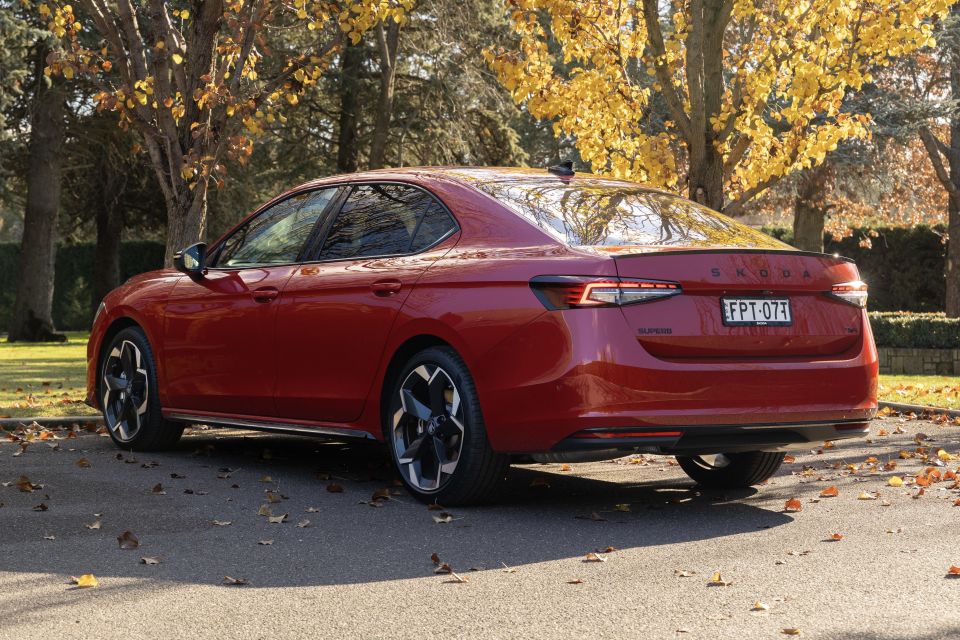
Australian sales of large sedans and wagons have dwindled in the past 10 years, leading the Volkswagen Group’s namesake brand in particular to pull the plug on its popular Passat and less popular Arteon in 2023. The former is still on sale in Germany, but the local departure of both models has left a hole at the top of VW’s passenger model range Down Under.
The Superb is very similar to the Passat, with which it shares its powertrains and many body panels, and Skoda is now the only mainstream VW Group brand selling large sedans and wagons in Australia, though Audi still offers several premium models at higher prices.
With the small Scala and mid-size Octavia still on sale after having received major updates in the past 12 months, it was time for Skoda’s flagship passenger car to receive a hefty upgrade. The fourth-generation Superb has just landed locally, despite having been on sale in Europe for more than a year.
The changes over its predecessor aren’t revolutionary, but the new Superb is now up-to-date with the latest Skoda design and multimedia, as well as the Volkswagen Group’s most advanced driving and safety technologies.
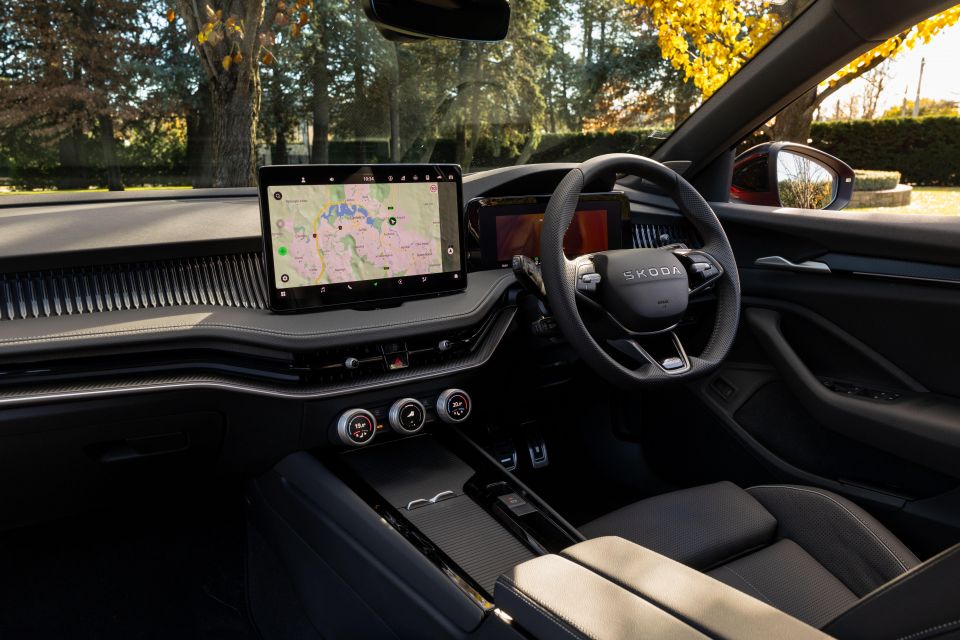
Key revisions include a retuned four-cylinder petrol engine, which offers the same outputs as several of its stablemates – most notably the Golf GTI hot hatch. It also features progressive steering and Volkswagen’s clever Dynamic Chassis Control Plus adaptive suspension.
Inside, there are new seats, a larger infotainment screen, and Skoda’s smart dials – which have already been seen on the new-generation Kodiaq. That all makes for a car that looks great on paper, but it comes at a cost.
The new Superb starts at just under $74,000 drive-away, and prices are up by $4000 and $3000 for the sedan and wagon respectively, which is a lot to fork over for a niche model from what was once VW’s budget Czech brand. Skoda Australia sold just 278 examples of the previous Suberb during the entirety of 2023, and just 153 in 2024.
Supply notwithstanding, that made it Skoda’s worst-selling model here last year, excluding the Enyaq electric SUV that arrived late in the year. Could these upgrades turn things around, or do the new Superb ‘luxury’ sedan and wagon fall short of their high-flying name?
The new Skoda Superb starts at $73,990 drive-away for the sedan, while the wagon commands a $1000 premium. Both body styles are only available in flagship Sportline trim.

| Model | Price before on-road costs | Drive-away pricing |
|---|---|---|
| 2025 Skoda Superb Sportline Sedan | $67,990 | $73,990 |
| 2025 Skoda Superb Sportline Wagon | $69,690 | $74,990 |
Following the demise of Volkswagen’s own Passat and Arteon sedans and wagons in 2023, the Superb has no direct rivals in Australia’s mainstream (sub-$70,000) large car segment, as classified by the industry. There are still some models classed as medium cars that will likely be cross-shopped against the Superb, but each offers something different.
There’s the Honda Accord sedan for $64,900 drive-away, but while it’s actually slightly larger than the Superb, it’s only available as a front-wheel drive hybrid sedan. The Hyundai Sonata sedan costs $55,500 before on-road costs and lacks hybrid technology, but it’s also larger than the Superb and only available with front-wheel drive.
Lexus has a starting price of $65,540 before on-roads for the hybrid front-drive ES sedan, and Toyota’s related Camry starts at $39,990 before on-roads, but all of the European mid-size luxury models except the Alfa Romeo Giulia and Volvo S60 start above $70k.
To see how the Skoda Superb stacks up against the competition, use our comparison tool
Buy your new car without the stress. It's fast, simple and completely free.
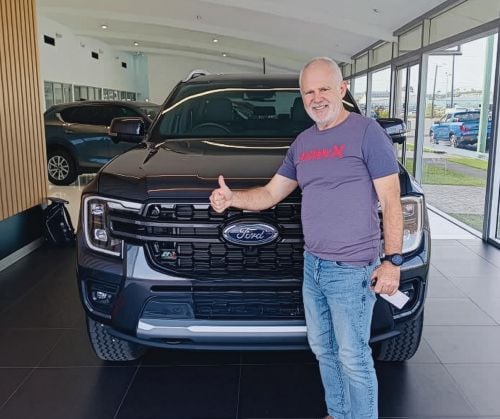
Great service from Travis and team, second time I have used this business would not hesitate to recommend them to anyone
Craig C.
Purchased a Ford Ranger in Sunshine Coast, QLD
CarExpert helped Craig save $7,224 on his Ford Ranger, now let us save you on your next new car.
Get your BEST priceIf you’re a Skoda fan, you should be pleasantly surprised by the upgrade the Superb interior has received. It’s simpler and cleaner, but no less functional than before.
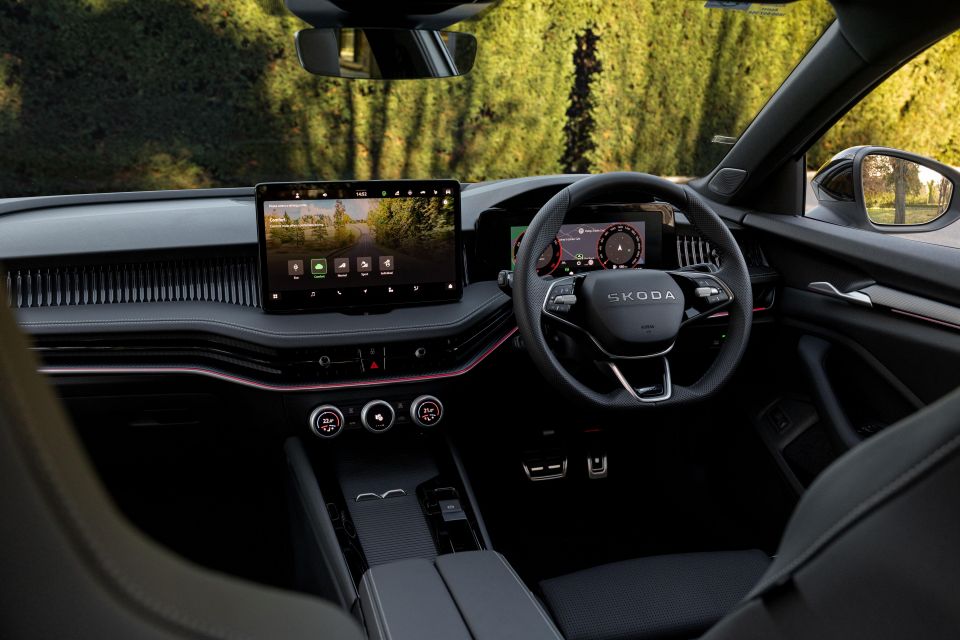
As with the new Kodiaq that launched a few months ago, the Superb’s most significant change inside involves its climate system. Instead of the traditional buttons and dials of the previous generation, you get Skoda’s new ‘smart dials’ and, trust us, that’s a good thing.
In an era of haptic controls in other Volkswagen products, the purely physical operation of the smart dials is refreshing. All three can be spun or pushed, to adjust temperature or air direction in the case of the outermost dials.
Same goes for the central dial, except it’s used to adjust fan speed, volume, or toggle between drive modes. They’re configurable too, allowing you to swap between as many as six functions.
We like how intuitive they are in practice, and they’re a good middle point between digital and physical interfaces. Above them is the Superb’s new 13-inch touchscreen infotainment system, which is four inches larger than before and headlined by sharp new graphics.

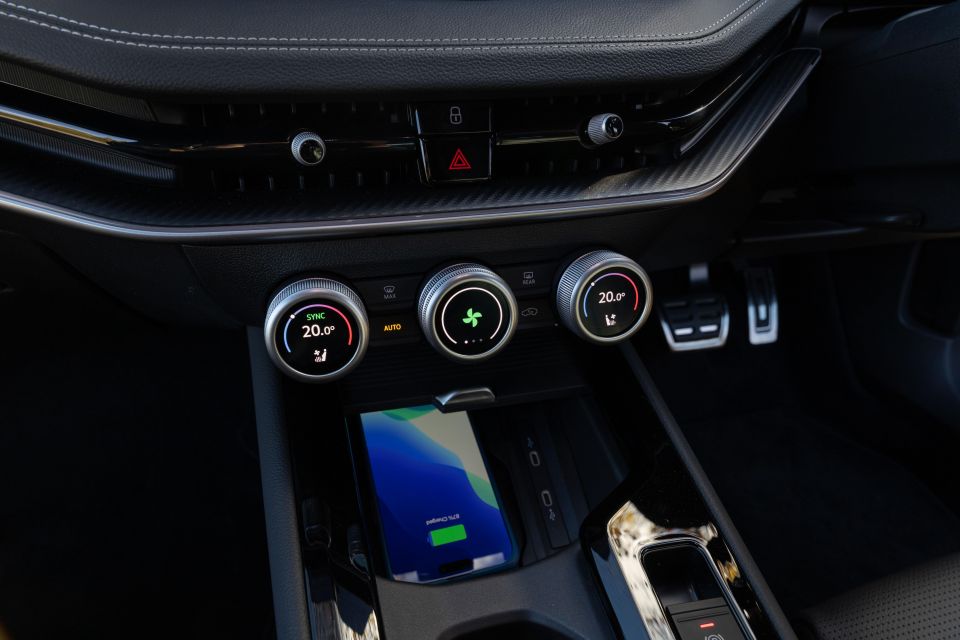
It’s easy to navigate and looks nice in a typical Skoda way. And, like the smart dials, it offers configurable shortcuts. Wireless smartphone mirroring is standard, though there are a number of USB-C ports to make use of too.
Maintained from the older model is a 10-inch digital instrument display, which works well but doesn’t look quite as premium as the infotainment system. Its integration into the dashboard seems haphazard, like the digital portion is too small for the space provided.
Still, you can scroll through a handful of different menus and displays using buttons on the steering wheel, in typical Volkswagen Group fashion. This makes for easy access to maps and key info.
The steering wheel’s buttons all feel solid, and their clear labelling should make it easy to figure everything out. Thankfully, there’s little glossy plastic here, and no haptic controls either.
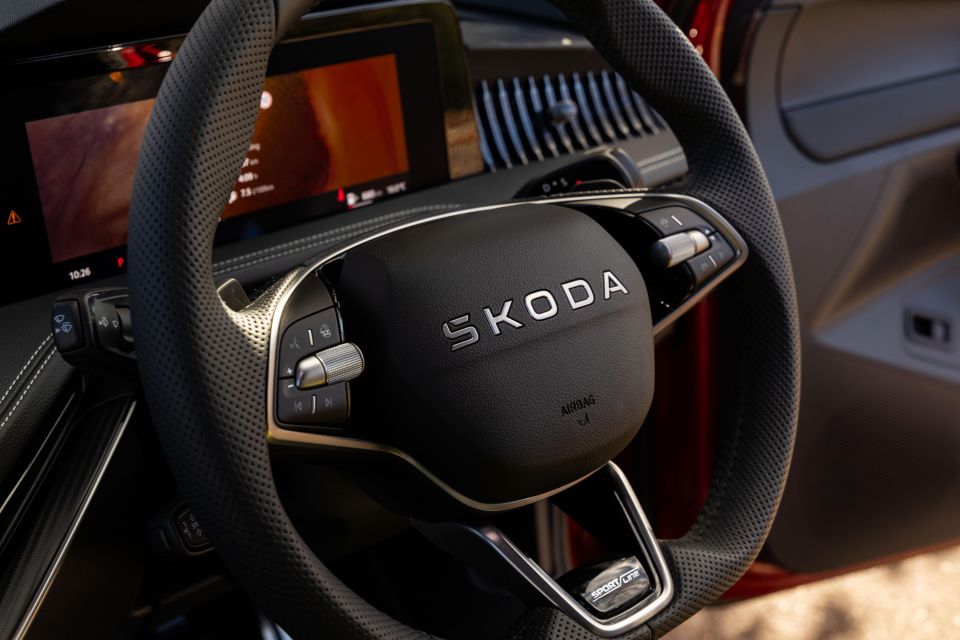
The rim is wrapped in perforated leather and feels nice in the hands. Its flat bottom adds some sporty flair, while the silver highlights and matching new Skoda wordmark on the centre pad look classy.
Unfortunately there’s a fair bit of glossy plastic on the centre console, but storage here is clever thanks to the dual sliding covers. Underneath is a ventilated wireless charging pad and cupholders, while Skoda has implemented segmented storage in the centre box, which houses the thoughtful screen cleaner, for instance.
You also get quality leather upholstery, and the front seats boast powered adjustment, as well as heating, ventilation, and a massage function. They’re appropriately supportive, and it’s easy to find a comfortable position thanks to the range of movement in the steering wheel.
Topping it all off is a cohesive design featuring simple shapes and curves that span the width of the cabin. The vertical slats on the dashboard also mirror Skoda’s iconic front grille design, and they’re something you don’t often see in car interiors.

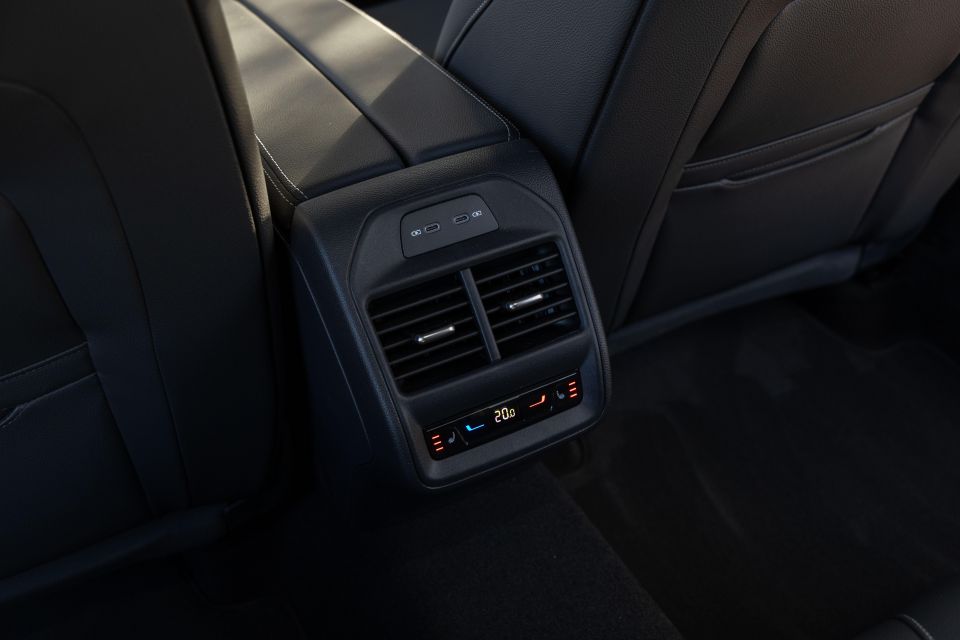
The Superb’s second row offers plenty of space. Unlike its smaller Octavia sibling, we don’t expect there to be any issues with legroom, while the wagon offers particularly generous headroom.
From here back is where the two body styles deviate, for obvious reasons. That said, rear passengers won’t notice too much of a difference between the two, as there are many common amenities like a fold-down armrest with cupholders, a tablet holder, heated outboard seats, and dual USB-C ports.
Changes for the wagon are minimal, limited to the addition of a tri-zone climate system and the removal of the sedan’s panoramic sunroof. The latter was standard on the previous Superb, but is now optional in response to customer feedback.
Otherwise, both bodies get a series of ISOFIX anchors and three top-tether points for securing child seats. There are also pockets on the front seatbacks for storing phones.
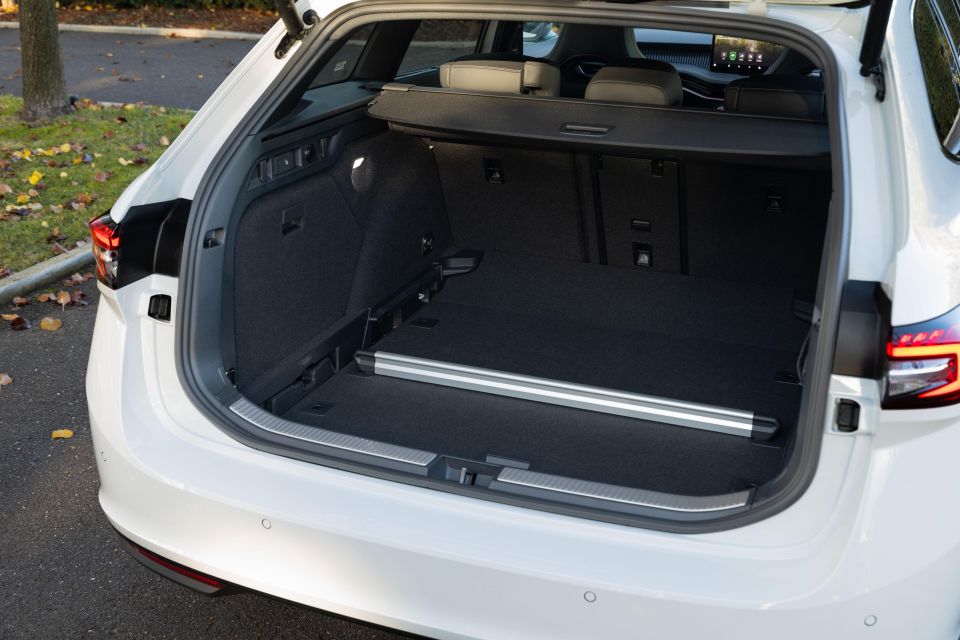
The Superb offers a sizeable boot regardless of the body style, though the wagon wins on outright volume. Both also get a handy suite of clever storage solutions to better organise cargo and space, reinforcing the focus on practicality that Skoda is known for.
There are nets, hooks, hammock-like moveable covers, an adjustable organiser on the floor, and various nooks and crannies all over the place. These all keep items neatly stowed, and help to keep larger boxes and containers from sliding around.
Making it easier to access is a powered tailgate for both body styles, which also features hands-free opening. There’s also a space-saver spare wheel fitted as standard for extra peace of mind (but still no full-size spare).
It’s a comfortable, visually pleasing interior, which should be expected from a flagship Skoda, and it can be bathed in high-quality sound from its Canton speakers. In general, the cabin is a good match for its price tag, even if much of it is shared with its more budget-priced stablemates.
| Dimensions | Skoda Superb Sedan | Skoda Superb Wagon |
|---|---|---|
| Length | 4912mm | 4902mm |
| Width | 1849mm | 1849mm |
| Height | 1481mm | 1482mm |
| Wheelbase | 2841mm | 2841mm |
| Cargo capacity (rear seats up) | 589L | 634L |
| Cargo capacity (rear seats folded) | 1795L | 1920L |
To see how the Skoda Superb stacks up against the competition, use our comparison tool
Only one powertrain is available with the Superb in Australia: Volkswagen’s ubiquitous EA888 2.0-litre four-cylinder turbo-petrol engine, this time producing 195kW of power and 400Nm of torque. This tune is shared with the Volkswagen Golf GTI and Tiguan R-Line in Australia, as well as the Passat sold overseas.

| Specifications | Skoda Superb |
|---|---|
| Engine | 2.0L 4cyl turbo-petrol |
| Power | 195kW @ 5000-6500rpm |
| Torque | 400Nm @ 1650-4350rpm |
| Transmission | 7-speed dual-clutch auto |
| Drive type | All-wheel drive |
| Tare mass | 1780kg – Sedan 1825kg – Wagon |
| 0-100km/h (claimed) | 5.6s – Sedan 5.7s – Wagon |
| Fuel economy (claimed) | 7.7L/100km – Sedan 7.8L/100km – Wagon |
| Fuel tank capacity | 66L |
| Fuel requirement | 95 octane premium unleaded |
| CO2 emissions | 175g/km – Sedan 177g/km – Wagon |
| Emissions standard | Euro 6 |
| Braked tow capacity | 2200kg |
We didn’t get enough time in any one car at Skoda’s local launch to record a representative real-world fuel economy figure.
To see how the Skoda Superb stacks up against the competition, use our comparison tool
Skoda Australia’s media launch drive took us through Canberra’s inner city and along the highways and backroads of the Australian Capital Territory, and the Superb’s performance in all these environments left us pleasantly surprised.
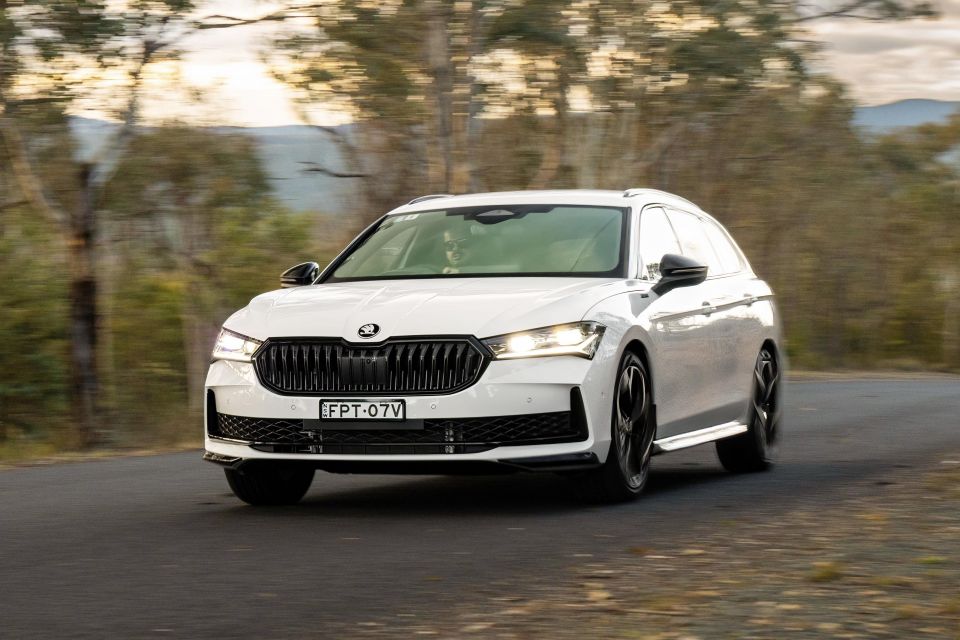
The headline feature here is the new Dynamic Chassis Control Plus (DCC Plus) adaptive suspension, which allows for 15 levels of damping firmness, allowing the Superb to morph from plush executive car to sharp grand tourer.
These levels are tied to each drive mode, and adjust the way the car rides and steers accordingly. The driver can also finetune the Superb’s sportiness in custom mode, which offers levels beyond and between what’s offered with the preset drive modes.
Combine this with the Superb’s upgraded Progressive Steering system and you end up with a confident, capable car. In town it’s comfortable enough without being too floaty or bouncy, while offering direct and light steering to navigate urban streets.
The steering becomes significantly heavier in Sport mode, and the suspension stiffens up to follow suit. This makes for satisfying corner-carving, allowing you to carry more speed through turns than many Superb owners ever will.
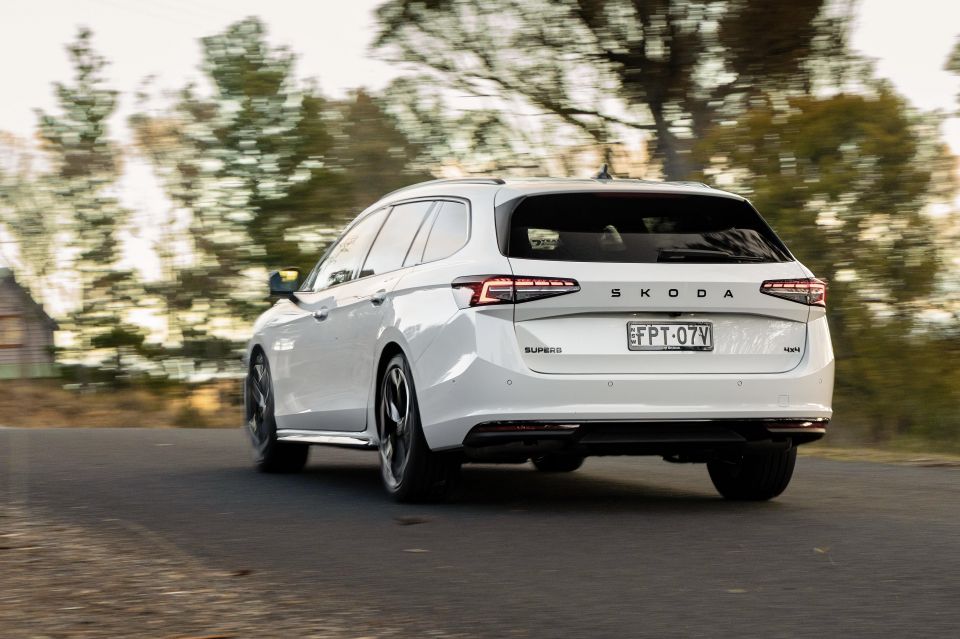
However, doing so exposes limitations with the standard Pirelli tyres, which begin to produce understeer on tighter bends once the speed picks up. This isn’t a dealbreaker, as the Superb has relatively narrow wheels and isn’t a sports car, instead offering safe front-end push at the limit of adhesion rather than snap oversteer, as it should.
This more neutral chassis balance is accompanied by quietness and compliance, both of which Skoda has nailed even with the Sportline’s larger-than-average alloys and low-profile rubber. That makes it comfortable to drive in daily commuting and also a great candidate for long-distance cruising.
Because there’s only one powertrain available in Australia, buyers can rest assured knowing what they’ll get. The 2.0-litre engine under the bonnet may produce less peak power, but its torque bump means the new Superb has no issues getting off the line.
You will hear a fair bit of noise when you plant the throttle, and it isn’t particularly sonorous. Despite tightening emissions laws and the fuel economy benefits of this particular engine tune, we still dream of a modern Superb with a smooth six-cylinder – like what was offered with earlier iterations.
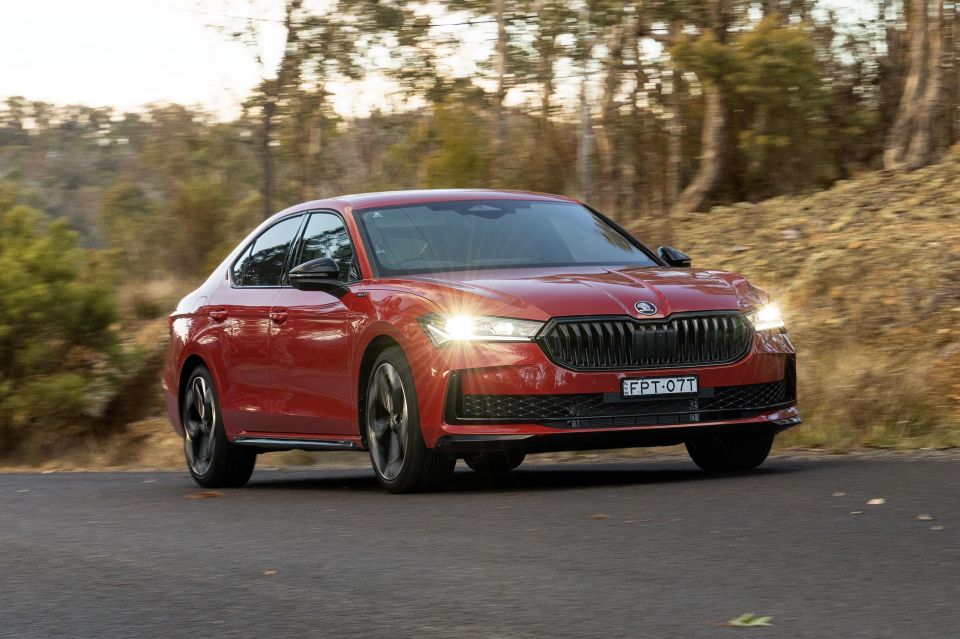
Still, we have no real complaints with its turbo four. Paired with the car’s new seven-speed – up from six in the previous generation – dual-clutch (DSG) automatic, you have a predictable driving experience with very little of the DCT clunking and stuttering of old.
The engine can feel a little overworked when it’s asked to move the near-two-tonne mass of the Superb quickly, but it’s ideal for light-footed trundling around, and there’s plenty of low-end torque for overtaking. And the brakes offer a similarly strong and consistent feel.
This is the main difference between the two body styles on the road. The wagon is nearly 50kg heavier than the sedan, and while that doesn’t sound like a lot on paper, the extra weight over the rear axle is noticeable on the move.
The sedan feels a touch more nimble during more spirited driving, while also having a slight edge in terms of both 0-100km/h acceleration and fuel economy. In most driving situations, the contrast is negligible, and the wagon’s greater cargo space and flexibility is a trade-off many will gladly make.
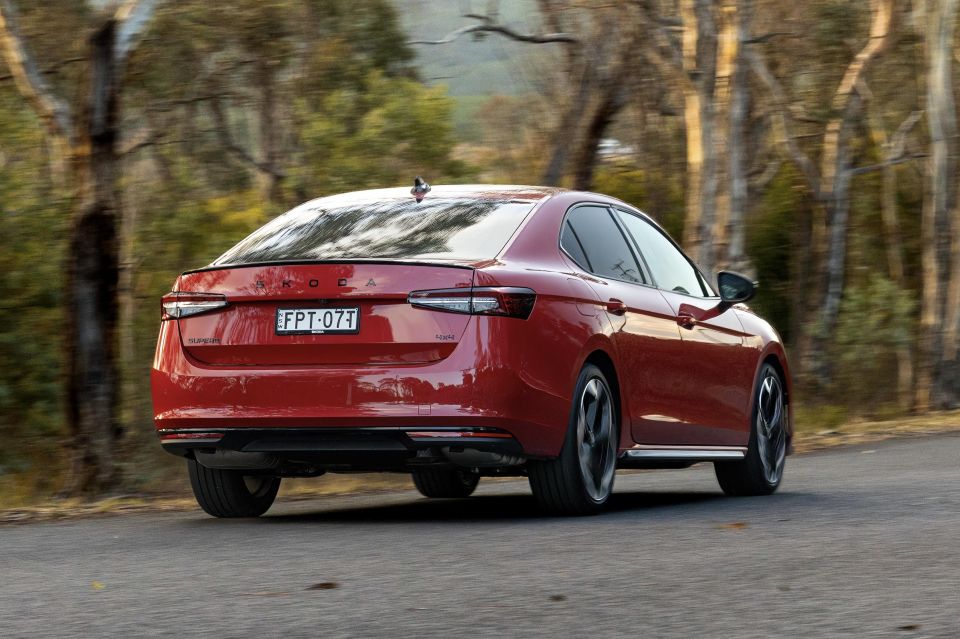
Where expert car reviews meet expert car buying – CarExpert gives you trusted advice, personalised service and real savings on your next new car.
Visibility out the rear of both model derivatives is good, though head checks may take an extra second given the car’s length. There’s a comprehensive suite of safety gear as standard, and each function is more than capable of compensating for any of the driver’s biological shortfalls.
New safety tech includes traffic sign recognition and safe exit warning, while other systems like adaptive cruise control and the surround-view camera have been upgraded and enhanced.
Travel Assist has been improved with predictive functionality, using navigation and traffic sign information to adapt to the surroundings autonomously. In practice, we felt able to trust the car’s safety systems to guide us along – even when the roads got bendier.
There’s also a crisp and clear head-up display that can show all this relevant information at a glance. In fact, everything feels quite clever, with all of the Superb’s functions behaving appropriately and reliably during our two-hour test drive.
To see how the Skoda Superb stacks up against the competition, use our comparison tool
The new Superb is available in only one top-shelf Sportline equipment grade, offered in both sedan (liftback) and wagon body styles.
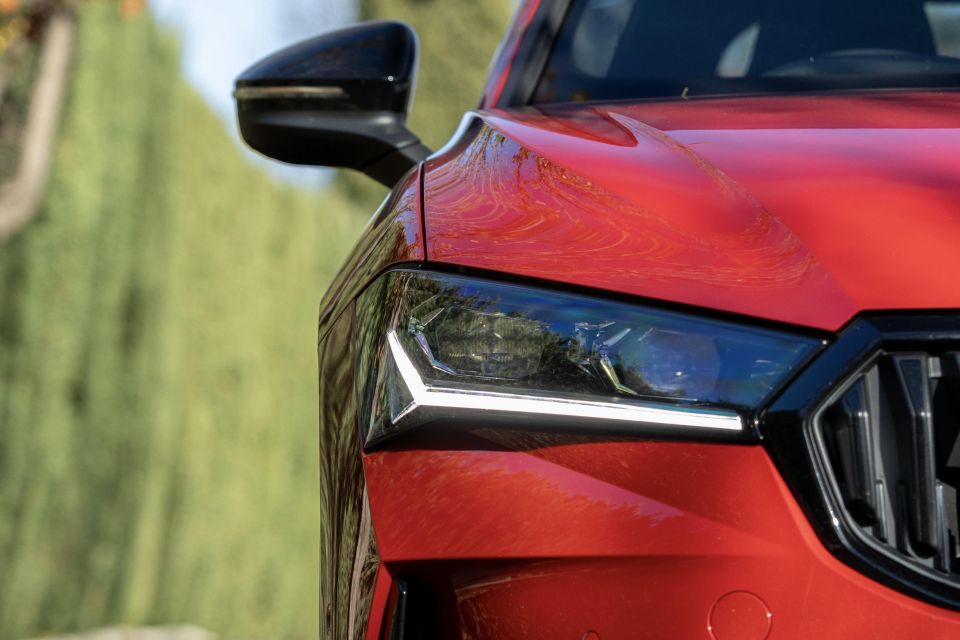
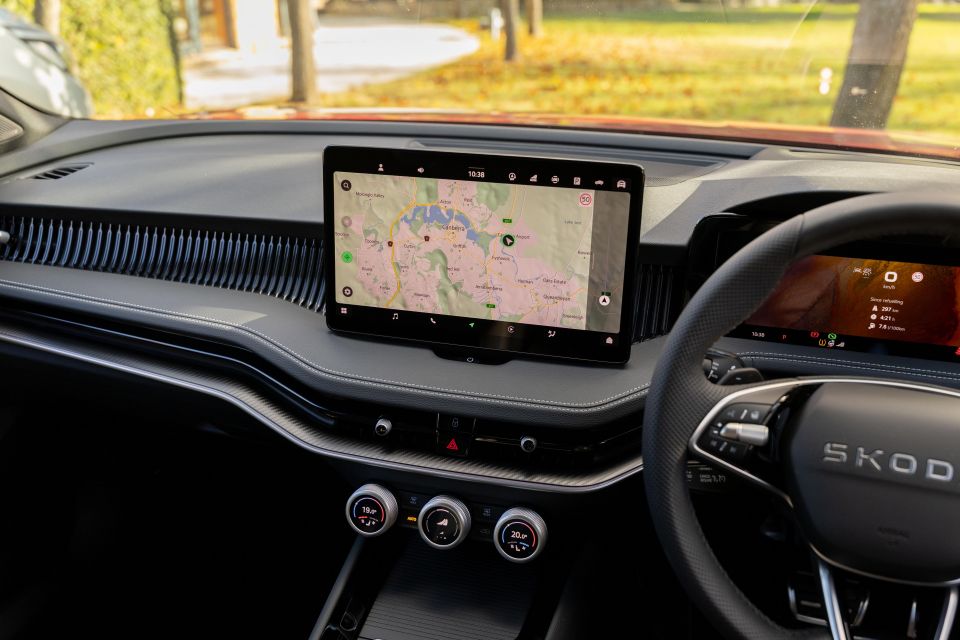
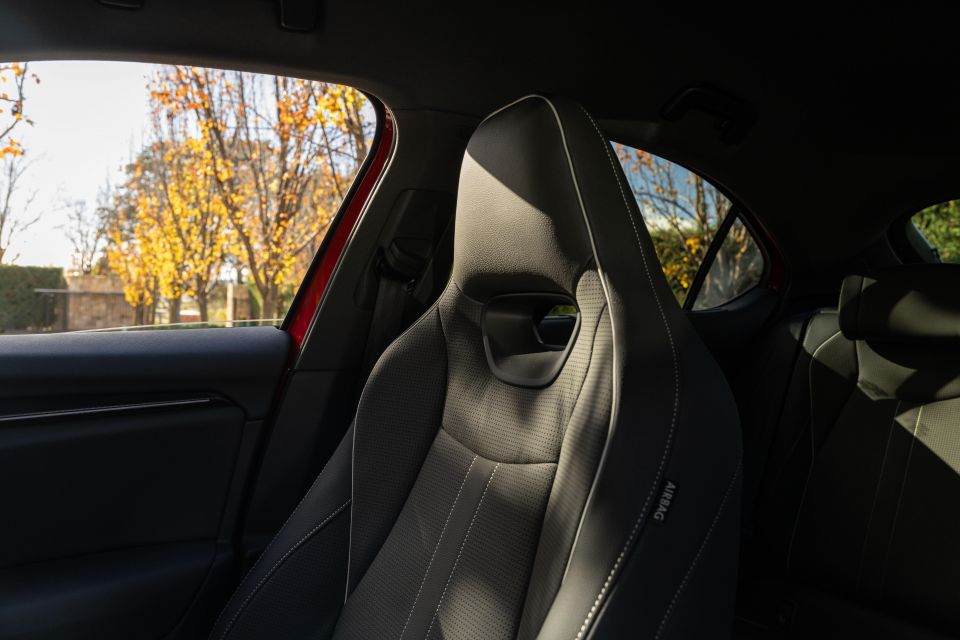

2025 Skoda Superb Sportline equipment highlights:
A panoramic sunroof was standard on the previous Superb, but is now a $1900 option for the wagon only.
To see how the Skoda Superb stacks up against the competition, use our comparison tool
While the outgoing Superb boasted a five-star ANCAP safety rating, the new model has yet to be independently crash tested and is therefore unrated. It does, however, have a five-star Euro NCAP rating based on testing conducted on its Passat fraternal twin in 2024.
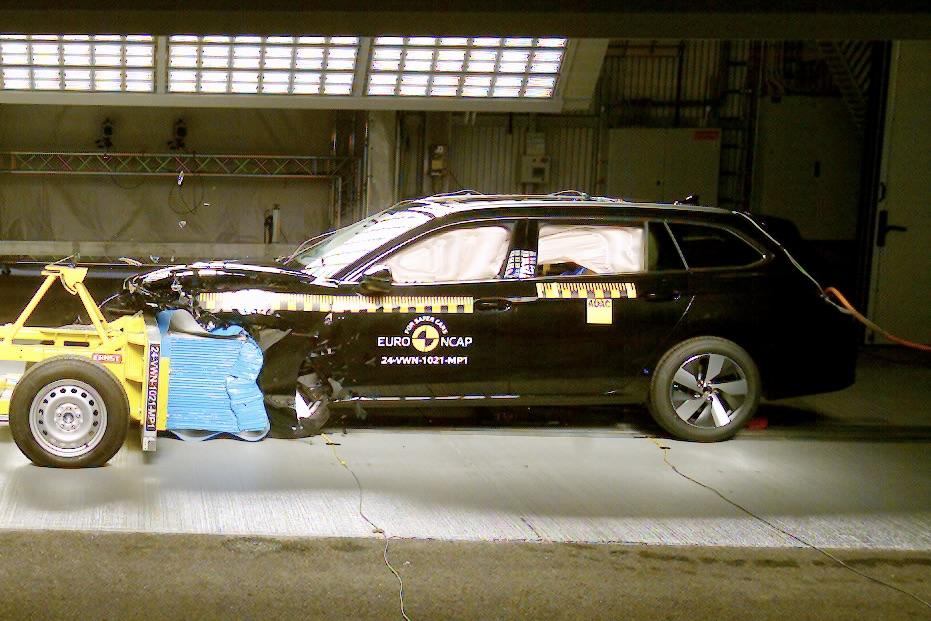
ABOVE: 2024 Volkswagen Passat Wagon Euro NCAP crash test.
| Category | Skoda Superb (Euro NCAP) |
|---|---|
| Adult occupant protection | 93 per cent |
| Child occupant protection | 87 per cent |
| Vulnerable road user protection | 82 per cent |
| Safety assist | 80 per cent |
Standard safety equipment includes:
To see how the Skoda Superb stacks up against the competition, use our comparison tool
Skoda Australia backs its cars with a seven-year, unlimited-kilometre warranty, including the new Superb. Servicing is required every 12 months or 15,000km, whichever comes first.
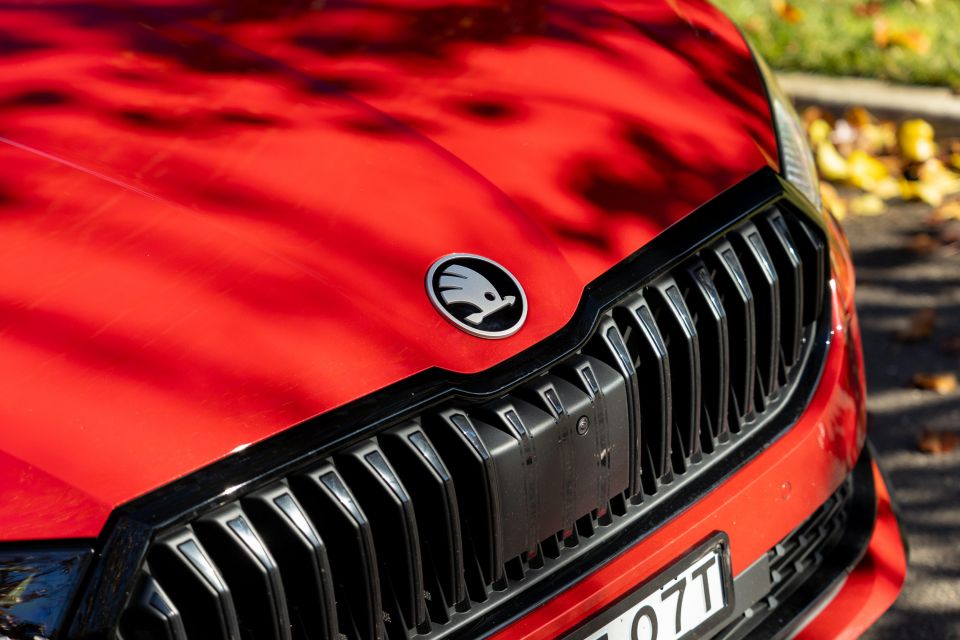
| Servicing and Warranty | Skoda Superb |
|---|---|
| Warranty | 7 years, unlimited kilometres |
| Roadside assistance | 12 months free, then service-activated |
| Service intervals | 12 months, 15,000km |
| Capped-price servicing | 7 years |
| Average annual service cost over 7 years | $724.14 |
| Total capped-price service cost | $5069 |
Skoda offers capped price service costs for the first seven scheduled services, as detailed below:
| Service | Price |
|---|---|
| 12 months, 15,000km | $473 |
| 24 months, 30,000km | $932 |
| 36 months, 45,000km | $473 |
| 48 months, 60,000km | $1313 |
| 60 months, 75,000km | $473 |
| 72 months, 90,000km | $932 |
| 84 months, 105,000km | $473 |
Alternatively, customers can purchase a $3000 five-year service pack, which can be extended by two years for an additional $700.
To see how the Skoda Superb stacks up against the competition, use our comparison tool
Buy your new car without the stress. It's fast, simple and completely free.

Great service from Travis and team, second time I have used this business would not hesitate to recommend them to anyone
Craig C.
Purchased a Ford Ranger in Sunshine Coast, QLD
CarExpert helped Craig save $7,224 on his Ford Ranger, now let us save you on your next new car.
Get your BEST priceSkoda’s new Superb may do its haughty name justice, but it doesn’t change the fact that most Australians just aren’t hungry for large executive sedans or wagons anymore.

The new model’s many upgrades are all meaningful and well-considered, which means it presents well, is more ergonomic than ever and drives brilliantly. Both body styles look sharp, but our eyes see the wagon wearing its fourth-generation skin better than the sedan.
There may be one or two small hiccups, like the way the instrument display is integrated into its housing, or the not-so-sticky tyres, but they don’t sour the experience much.
What does detract is the upfront price, which is a lot for a Skoda – even if it is a reskinned Passat – and opting for the more practical wagon will set you back even more. But it’s not a lot more and it’s unlikely to dent the cult following European wagons can attract.
There’s also the service pricing when you don’t opt for a service pack, which is tough to swallow even by European standards.

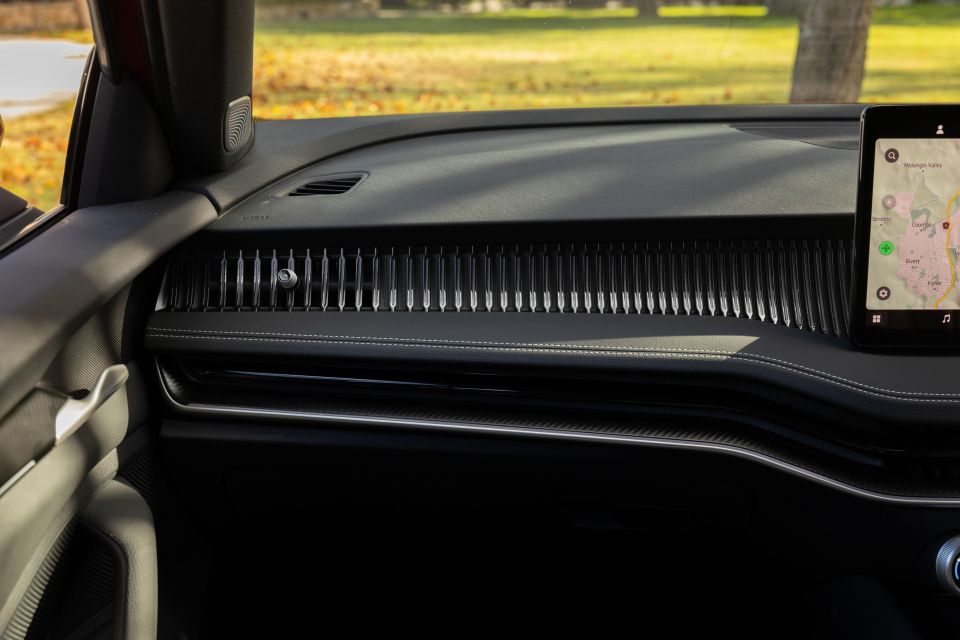
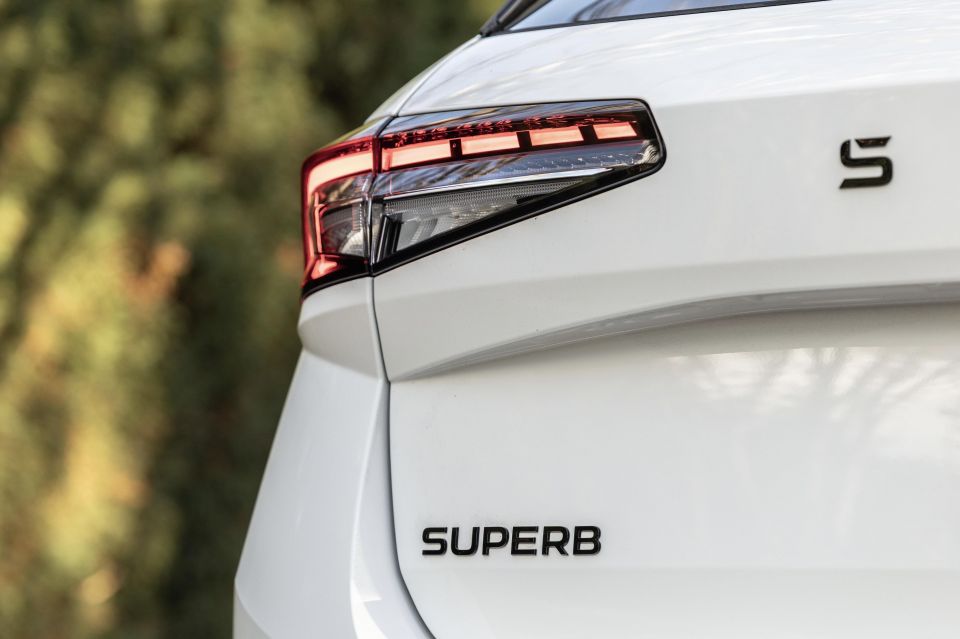

Then there’s the fact that the Superb has been, and will likely continue to be, Skoda’s least popular model in Australia, in line with dwindling demand for large cars Down Under.
Still, those in the market for a Superb know what they’re after, and they’ll get a very solid vehicle if they choose this over any of its few ‘rivals’, including the less powerful and front-drive only Accord and Sonata.
The Superb’s toughest competitor may be the Lexus ES, which does bring hybrid efficiency gains but also remains front-drive, so it might come down to whether you value refined Japanese luxury more than a bit more grunt, sportier handling and all-wheel drive.
To us, the relative exclusivity of the Superb is a benefit in and of itself, and its performance, tech and safety gear make it worth a look if you’re after a big, near-premium European car. If you do buy one, do yourself a favour and get the wagon.
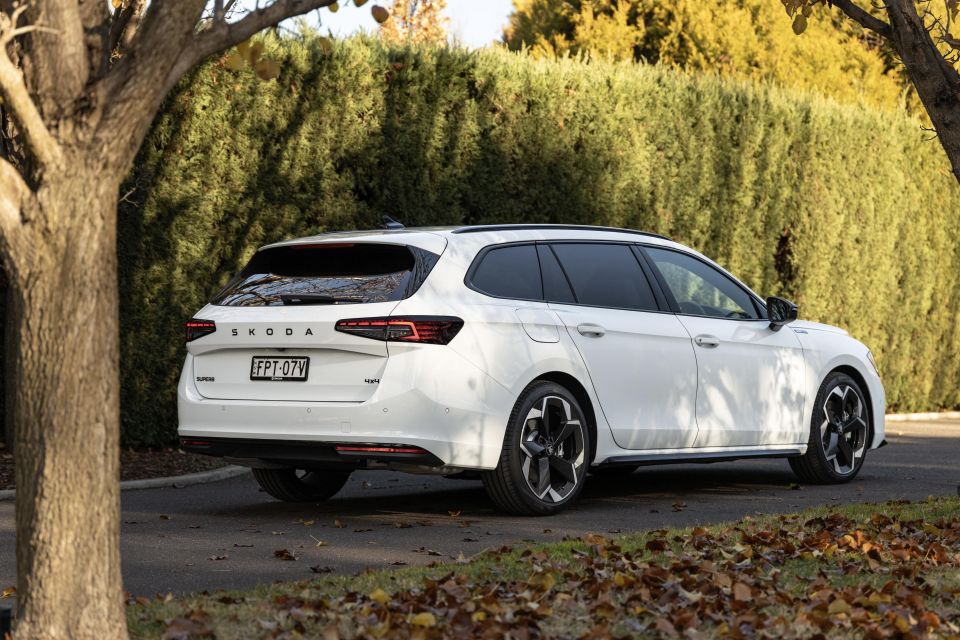
Interested in buying a Skoda Superb? Let CarExpert find you the best deal here
Click the images for the full gallery
Where expert car reviews meet expert car buying – CarExpert gives you trusted advice, personalised service and real savings on your next new car.
Max Davies is a CarExpert journalist with a background in regional media, with a passion for Japanese brands and motorsport.


William Stopford
4 Hours Ago
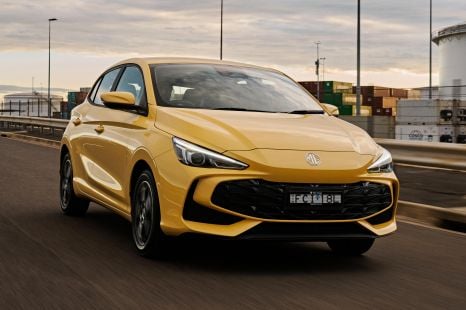

William Stopford
2 Days Ago
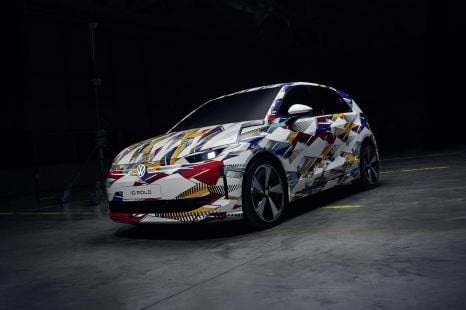

James Wong
8 Days Ago
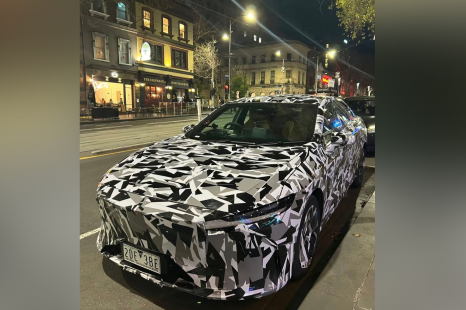

William Stopford
9 Days Ago
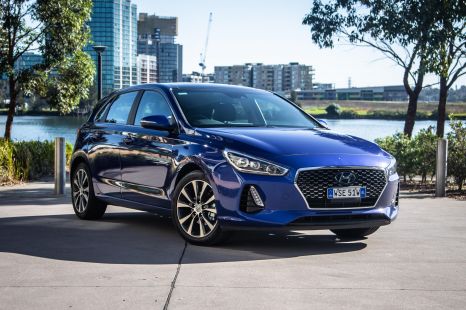

William Stopford
10 Days Ago
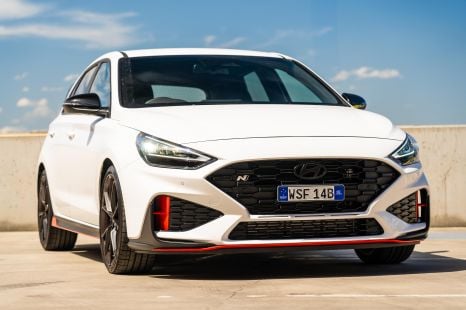

William Stopford
11 Days Ago